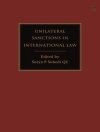Modern technological development has been both rapid and fundamentally transformative of the means and methods of warfare, and of the broader environment in which warfare is conducted. In many cases, technological development has been stimulated by, and dedicated to, addressing military requirements. On other occasions, technological developments outside the military sphere affect or inform the conduct of warfare and military expectations. The introduction of new technologies such as information technology, space technologies, nanotechnology and robotic technologies into our civil life, and into warfare, is expected to influence the application and interpretation of the existing rules of the law of armed conflict. In this book, scholars and practitioners working in the fields critically examine the potential legal challenges arising from the use of new technologies and future directions of legal development in light of the specific characteristics and challenges each technology presents with regard to foreseeable humanitarian impacts upon the battlespace.
Cuprins
Introduction: Conundrum of New Technologies in the Law of Armed Conflict.- The Legal Challenges of New Technologies: An Overview.- Ethical Challenges of New Military Technologies.- Legal Review of New Technology Weapons.- Where Do Cyber Hostilities Fit in the International Law Maze? Geography, Territory and Sovereignty in Cyber Warfare.- Military Strategic Use of Outer Space.- The Law Applicable to Military Strategic Use of Outer Space.- Nanotechnology and the Law of Armed Conflict.- Anticipating the Biological Proliferation Threat of Nanotechnology: Challenges for international Arms Control Regimes.- Nanotechnology and Military Attacks on Photosynthesis.- Unmanned Aerial Vehicles: Do They Pose Legal Challenges? Examining Autonomous Weapon Systems from a Law of Armed Conflict Perspective.- Unmanned Naval Vehicles and the Law of Naval Warfare.- Conclusion: Challenges of New Technologies for the Law of Armed Conflict.












